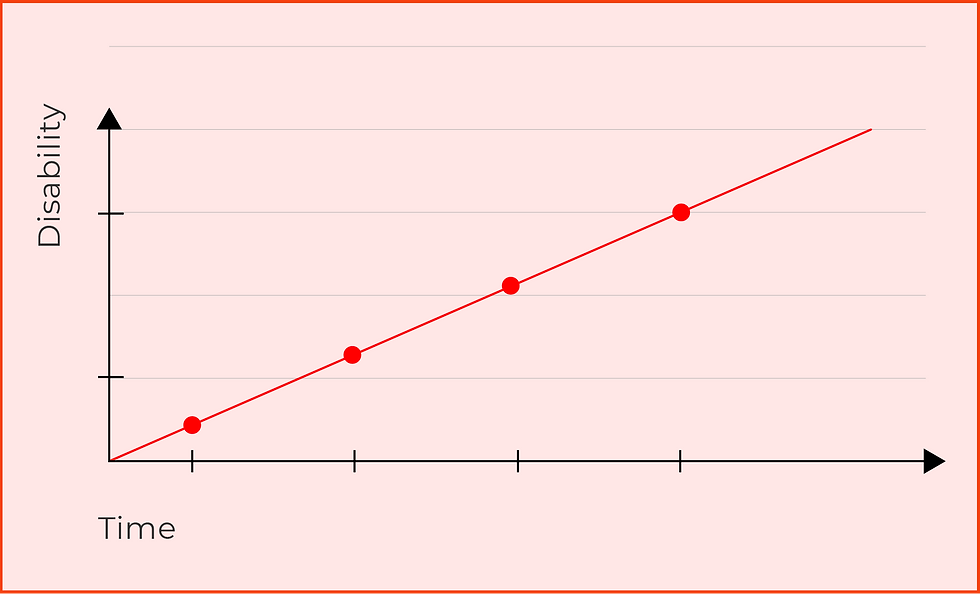Multiple Sclerosis (MS)
- Curtis Allderidge
- Jun 24
- 2 min read
Updated: Jun 25
MS is a chronic and often disabling auto-immune disorder that attacks the central nervous system (brain and spinal cord).
The body's immune system mistakenly attacks the myelin sheath (protective covering) of nerve fibres. The damage to the nerve fibres causes demyelination and lesions are formed on the sites of injury which affects nerve conductivity.
Facts & Statistics (https://www.msaustralia.org.au/news/the-rising-prevalence-of-ms-across-australia/)
More than 33,000 Australians live with MS
1-2 Australians are diagnosed with MS every day
MS affects young adults more than any other acquired neurological condition
average age of diagnosis is between 20-40 years
3 out of 4 Australians diagnosed with MS are women

Other common symptoms include:
Tiredness/Fatigue
Heat and/or Cold Sensitivity
Dizziness and Vertigo
Chronic Pain
Bladder and Bowel Changes
Spasticity
There are 3 types of MS:
Relapsing Remitting (RRMS)
is the most common form of MS affecting about 85% of all people diagnosed with MS. It is caused by a flare up of the neurological symptoms (relapse) followed by periods of recovery or remission.

Image link: https://www.msaustralia.org.au/types-of-ms/
Secondary progressive (SPMS)
is a secondary phase of relapsing remitting MS that can develop many years after the initial diagnosis of MS. It is characterised by a reduction in relapses and a progressive worsening of symptoms (disability) over time, with no signs of remission and/or recovery.

Image link: https://www.msaustralia.org.au/types-of-ms/
Primary Progressive (PPMS)
Accounts for approximately 10-15% of people with MS. It is characterised by a progressive worsening of symptoms and disability right from the beginning, with no periods of recovery or remission.

Image link https://www.msaustralia.org.au/types-of-ms/
How is MS diagnosed?
To clinically diagnose MS, there needs to be evidence of not only multiple attacks at different locations in the CNS (brain and spinal cord) but also that these attacks occurred at different times.
Multiple tests and examinations must be performed to diagnosis MS such as seeing a neurologist, MRI scan, and Lumbar puncture.

How Can Exercise Physiology Help?
Exercise under the supervision of an Exercise Physiologist can assist with overall physical and mental wellbeing as well as manging symptoms.
The benefits include but are not limited to:
Maintaining or improving mobility & independence.
Manging symptoms such as stiffness, pain, fatigue, anxiety, poor balance, and spasticity, just to name a few.
Improve muscle strength and cardiovascular health & fitness.
Improved sleep and cognitive functioning (less brain fog).
Exercise has been shown to promote neuro-protective mechanisms such as increased production of brain-derived neurotrophic factor (BDNF), which supports the survival and growth of neurons which may potentially slow down the progression of the disease!
For any further information, questions, or to book an appointment please feel free to contact me via phone (03) 8203 2814 or email curtis@conqueralliedhealth.com.au
"Conquer Your Pain, Injury, and Health."






Comments